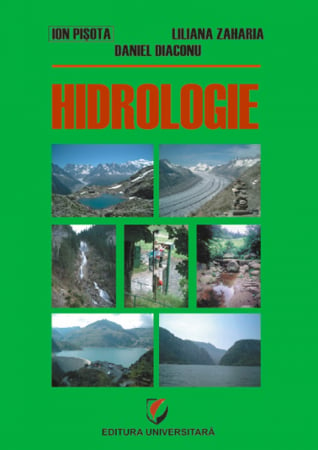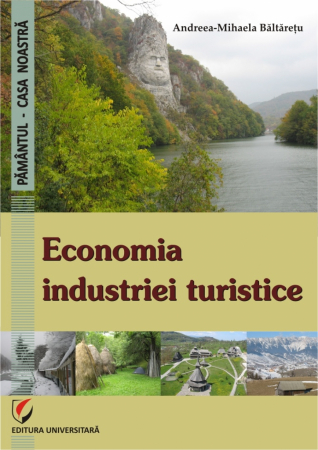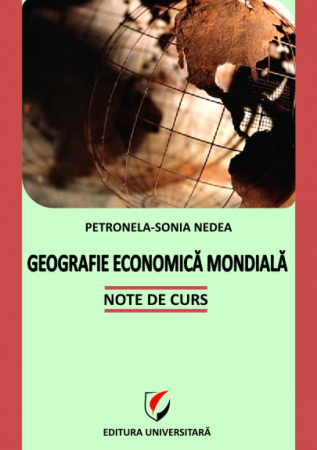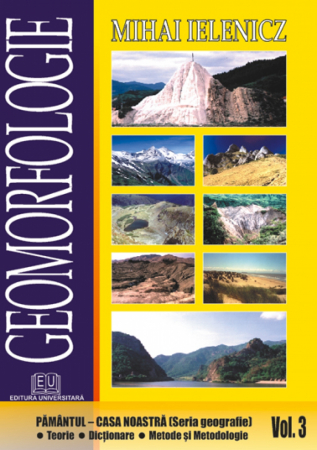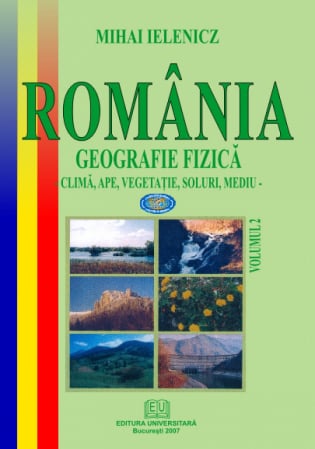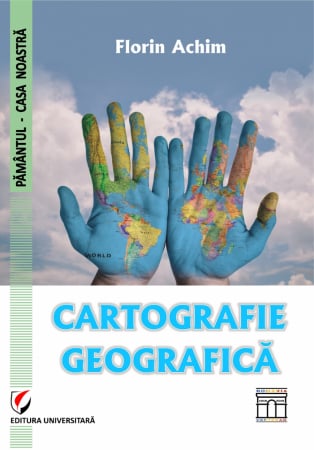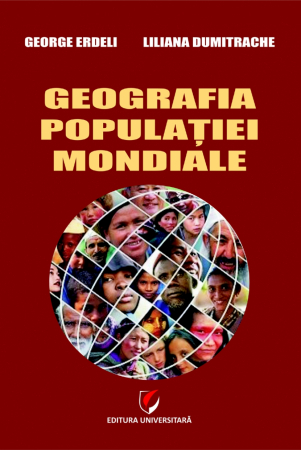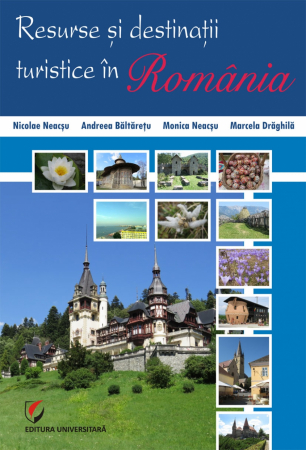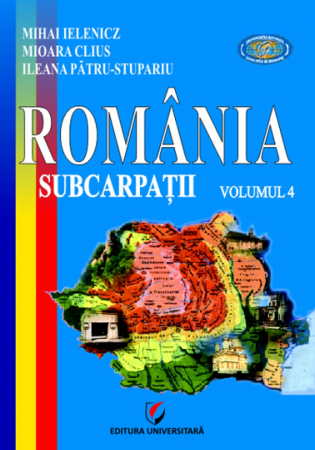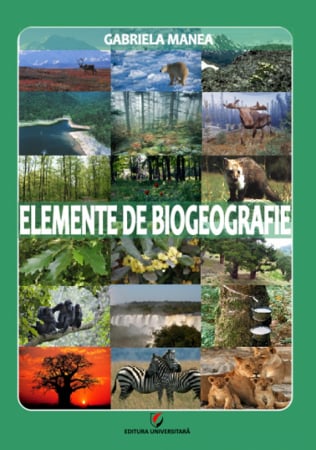Propuneri manuscrise: [email protected]: 0745 204 115
Urmărire comenzi Persoane fizice / Vânzări: 0745 200 357 / Comenzi Persoane juridice: 0721 722 783
Editura: Editura Universitară
Autor: Elena Bogan, Tamara Simon, Melinda Candea
ISBN: 978-606-28-1242-3
DOI: 10.5682/9786062812423
Anul publicării: 2021
Pagini: 386
Ediția: I
- Descriere
- Cuvânt înainte
- Cuprins
- Autori
- Review-uri (0)
Extinderea fenomenului de globalizare economica, culturala si sociala, a circulatiei rapide in orice parte a globului, trebuie sa determine in timp si spatiu o mai mare intelegere si actiune pentru pastrarea intregului patrimoniu turistic ca suport al identitatii nationale, regionale si locale, cu diminuarea conditiilor de degradare si distrugere ireversibila, dincolo de multiplele interese economice de moment. In realitate, pentru orice vizitator ori turist, cunoasterea in timp si spatiu a intreg patrimoniului turistic national nu ajunge pe durata unei vieti, desi foarte multi se orienteaza catre locuri exotice, pentru ca noi nu stim sau nu vrem sa ne valorificam aceste bunuri si valori de exceptie.
Autorii, geografi din pasiune si cu specializare in domeniul turismului, au incercat sa ofere cea mai actuala imagine a tot ceea ce inseamna patrimoniul turistic al tarii, coroborata cu o scurta evaluare a gradului de dezvoltare turistica dar si ale problemelor de mediu, precum si ale noilor orientari in dezvoltarea acestei industrii a ospitalitatii, confruntata cu o concurenta tot mai acerba la nivel european si mondial. Abordarea s-a sprijinit pe date conceptuale, istorice, geografice si culturale, economice, specifice domeniului turistic, de protectie a mediului si a patrimoniului, toate selectate pentru a demonstra caracteristicile deosebite ale patrimoniului turistic al Romaniei.
Romania is a country with wonderful lands, from the delta to the mountain tops, with towns and villages scattered along valleys and roads, which delight every generation with natural and cultural landscapes full of history and millennial traditions. The history of this people with remarkable antiquity, with a multitude of coordinates and facets - political, military, economic, social and cultural, has facilitated the expansion and development of rich human settlements through their entire natural and cultural heritage. Considered the "garden of the Mother of God", this Romanian geographical space abounds in appreciations and descriptions from many foreign travelers of yesterday and today.
In these conditions, Romania stands out as a country with a strong geographical personality, doubled by a special tourist vocation. On an area of only 238,391 km2, mountains, hills, plateaus and plains are harmoniously and balanced, which is an imposing architectural ensemble, which Nicolae Balcescu likened to a fortress-symbol of the Romanian people's resistance against all the vicissitudes of history. Thus, the relief outlines the potential and specificity of the Romanian territory from a tourist point of view.
The ancient habitation of the territory, the uninterrupted presence of human activities generating material elements in this space, have led in time to a highly appreciated anthropic tourist heritage, belonging either to the sphere of material civilization elements (historical vestiges, art and architecture monuments, objectives historical and socio-cultural, etc.), or spiritual civilization (customs, folklore, religion, hospitality, community organization, etc.).
The tourist offer is thus completed by the specific technical-material base (accommodation and leisure base, treatment base, public alimentation, tourist transport itself) and by the general infrastructure. Among the components of the general infrastructure for tourism, the most important is represented by the network of roads - recognized as a "structuring vector" in development, with direct beneficial effects in tourism development, which ensures access to all resources and tourist structures, Romania having , as a whole, a good network of transport routes, which covers the national territory.
The current university course "Romania's tourist heritage" is not only a simple teaching material dedicated to students, but also a synthesis of everything that our country has more representative in order to be capitalized balanced and sustainable in terms of tourism. The experience through organized tourism in our country, of about two centuries, can always be enriched as a tourist offer.
The expansion of the phenomenon of economic, cultural and social globalization, of rapid movement in any part of the globe, must determine in time and space a greater understanding and action for preserving the entire tourist heritage as a support of national, regional and local identity, with diminishing conditions of irreversible degradation and destruction, beyond the multiple economic interests of the moment. In reality, for any visitor or tourist, the knowledge in time and space of the entire national tourist heritage does not last for a lifetime, although many are oriented towards exotic places, because we do not know or do not want to capitalize on these goods and values. exceptional.
The authors, passionate geographers with specialization in the field of tourism, tried to offer the most current image of everything that means the tourist heritage of the country, corroborated with a brief assessment of the degree of tourism development but also of environmental issues and new orientations in the development of this hospitality industry, facing an increasingly fierce competition at European and world level. The approach was based on conceptual, historical, geographical and cultural, economic data, specific to the tourist field, environmental protection and heritage, all selected to demonstrate the special characteristics of Romania's tourist heritage.
The Authors
Introduction / 9
CHAPTER I. Tourist heritage - concepts, definitions and principles / 11
1.1. Tourist heritage - concepts and definitions / 11
1.1.1. Natural heritage - conceptual and institutional approach / 13
1.1.2. The structure of the natural tourist patrimony / 16
1.1.3. Cultural heritage - conceptual and institutional approach / 20
1.1.4. The structure of the cultural tourist patrimony / 24
1.2. Principles of sustainable capitalization of natural and cultural heritage with tourist values / 36
1.3. Cultural and creative economy as a support for the tourism industry / 39
CHAPTER II. Natural tourist heritage / 43
2.1. The tourist patrimony of the relief / 44
2.1.1. The tourist patrimony of the mountain units / 45
2.1.1.1. The main types of relief with a special tourist function / 47
2.1.1.2. Tourist attractions specific to the mountain area / 61
2.1.2. The tourist potential of the hill and plateau units / 70
2.1.3. The tourist potential of the plains and meadows / 72
2.1.4. Danube Delta - biosphere reserve / 73
2.2. Climate-tourism potential / 79
2.2.1. Climate - climatic parameters of tourist importance / 80
2.2.2. Types of bioclimate / 86
2.2.3. Climatotherapy / 89
2.3. The tourist potential of the waters / 91
2.3.1. The tourist potential of the flowing waters / 91
2.3.2. The tourist potential of the lakes / 93
2.3.3. Outbreaks / 98
2.4. Romania's spa heritage / 99
2.4.1. Mineral and thermal waters / 99
2.4.1.1. Mineral waters / 101
2.4.1.2. Thermal and thermomineral waters / 105
2.4.2. Therapeutic muds / 106
2.4.3. Natural therapeutic gases (emanations of mophetic origin) / 107
2.4.4. Therapeutic salines / 108
2.5. The tourist potential of the Romanian Black Sea coast / 109
2.5.1. Characteristics and potential of the coastal tourist space / 109
2.5.2. Beach management in Romania / 114
2.6. The tourist patrimony of the components of the biogeographical cover / 117
2.6.1. The vegetal cover and its role in the development of tourism / 117
2.6.2. The social-tourist function of the forest / 120
2.6.3. The tourist potential of the fauna / 122
2.6.4. The tourist potential of protected areas / 126
2.7. Risk factors in the natural tourist patrimony / 137
CHAPTER III. Romania 's cultural tourism heritage / 142
3.1. Criteria for identification, classification, inventory for the Romanian cultural heritage / 144
3.1.1. Criteria for identification, classification, inventory for real estate cultural heritage / 146
3.1.2. Criteria for identification, classification, inventory for mobile cultural heritage / 148
3.1.3. Criteria for identification, classification, inventory for living cultural heritage / 150
3.1.4. Criteria for identification, classification, inventory for the heritage of cultural landscapes / 152
3.1.5. Criteria for identification, classification, inventory for museum heritage / 155
3.1.6. Criteria for identification, classification, inventory for gastronomic heritage / 157
3.2. Risk factors in the cultural tourist patrimony / 160
3.3. General requirements for the evaluation of cultural goods for capitalization in tourism / 168
3.4. Presentation of the main types of cultural heritage / 170
3.4.1. Romanian cultural heritage with universal and European recognition / 170
3.4.2. Romanian cultural heritage with national recognition / 185
3.4.2.1. Monuments and archeological sites / 185
3.4.2.2. Historical monuments and architectural ensembles / 190
3.4.2.3. Public monuments / 214
3.4.2.4. Memorials and funerary monuments / 216
3.5. Museum institutions and public collections / 218
3.6. Cultural-artistic institutions and manifestations / 229
3.7. The patrimony of art and ethnographic creation in Romania / 232
3.7.1. The structure of folk art and creation / 235
3.7.2. Folklore manifestations / 252
CHAPTER IV. Tourist infrastructure / 255
4.1. The technical-material base of tourism / 255
4.1.1. Accommodation structures (accommodation base) and tourist accommodation / 256
4.1.2. Tourist food structures for tourism / 269
4.1.3. Tourist treatment structures (treatment base) / 273
4.1.4. Leisure structures (basis for leisure) / 275
4.2. Ways of communication / 283
4.2.1. General characteristics / 283
4.2.2. Means of transport used in tourism / 284
4.2.2.1. Railway tourism / 286
4.2.2.2. Road tourism / 289
4.2.2.3. Naval tourism / 291
4.2.2.4. Air tourism / 295
4.2.2.5. Special tourist transports / 296
4.3. Tourist traffic / 297
4.3.1. The characteristics of the tourist circulation / 297
4.3.2. Dynamics of the number of tourists in Romania / 298
4.3.3. International tourist flows to Romania / 303
4.3.4. Romanian tourist flows abroad / 305
4.4. Activity of travel agencies and tourist information centers / 306
4.4.1. The activity of travel agencies / 306
4.4.2. The activity of the tourist information centers / 309
CHAPTER V. Tourist products specific to Romania / 311
5.1. Tourist products specific to Romania / 311
5.2. Perspectives for the development and promotion of tourism products / 325
CHAPTER VI. Digitization of anthropic and natural tourist heritage / 331
6.1. The system of values integrated in the patrimony / 331
6.1.1. Types of values for heritage with tourist values / 331
6.1.2. The system of criteria for the tourist patrimony / 336
6.2. Digitization of cultural and natural tourist heritage / 339
CHAPTER VII. The major types of impact produced by tourism on the environment and those of the environment on tourism / 346
7.1. Major impact categories / 346
7.2. Sustainable development of tourism / 351
7.3. The concept and categories of support capacity for tourism and environment / 357
7.4. Application of environmental quality assessment systems / 360
7.5. Application of the green tourism system / 363
BIBLIOGRAPHY / 371
ANNEX / 380
TAMARA SIMON
MELINDA CANDEA

6359.png)
![Patrimoniul turistic al Romaniei - Elena Bogan, Tamara Simon, Melinda Candea [1] Patrimoniul turistic al Romaniei - Elena Bogan, Tamara Simon, Melinda Candea [1]](https://gomagcdn.ro/domains/editurauniversitara.ro/files/product/large/cop-patrimoniul-turistic-3060-24647888.jpg)
